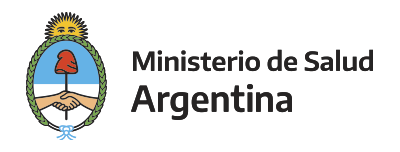Please use this identifier to cite or link to this item:
http://sgc.anlis.gob.ar/handle/123456789/2434| DC Field | Value | Language |
|---|---|---|
| dc.contributor.author | Salomón, Oscar Daniel | es |
| dc.contributor.author | Arias, Antonieta Rojas DE | es |
| dc.date.accessioned | 2022-06-29T13:31:22Z | - |
| dc.date.available | 2022-06-29T13:31:22Z | - |
| dc.date.issued | 2022 | - |
| dc.identifier.uri | http://sgc.anlis.gob.ar/handle/123456789/2434 | - |
| dc.description | Fil. Salomón, Oscar Daniel. ANLIS Dr.C.G.Malbrán. Instituto Nacional de Medicina Tropical; Argentina. Comité Nacional de Investigaciones Científicas y Técnicas (CONICET), Buenos Aires, Argentina. | es |
| dc.description | Fil: Rojas De Arias, Antonieta. Centro para el Desarrollo de la Investigación Científica (CEDIC), Asunción, Paraguay. | es |
| dc.description.abstract | Yellow fever (YF) epizootics in South America during the 21st century have an unprecedented recorded magnitude and geographical dispersion. The YF spread progressively involved areas considered previously free of risk reaching the edge of cities with large unvaccinated populations, and urban outbreaks were frequently forecasted. We critically reviewed the initial stages and enhancing contexts of YF urban epidemics since the 17th century in the Americas, and the modeling attempts of YF epidemic risk by of Aedes-Human transmission, to find common factors that increase the probability of these events in the current scenarios. The YF urban outbreaks of the past showed as necessary conditions the multiple introduction by viremic carriers clustered in time and space, coincident with population peaks of Aedes. These conditions are not met in the current outbreaks in the Americas by sylvatic YF cycles, besides the protective impact of vector control campaigns, vaccination coverage, improved surveillance, and case management. Therefore, urban Aedes-Human YF outbreaks in the Americas are still possible but with low probability or very focal transmission, while the conditions reported in the past were avoided, and the surveillance and control measures sustained, including the vaccination of the population at risk. | es |
| dc.language.iso | en | es |
| dc.relation.ispartof | Anais da Academia Brasileira de Ciencias | es |
| dc.relation.ispartofseries | Anais da Acad Bras Cienc .;2022 Jun 17;94(2):e20201252 | - |
| dc.rights | Open access | es |
| dc.rights | Creative Commons Attribution 4.0 International License | es |
| dc.rights.uri | https://creativecommons.org/licenses/by/4.0/ | es |
| dc.subject | Aedes | es |
| dc.subject | Fiebre Amarilla | es |
| dc.subject | Virus de la Fiebre Amarilla | es |
| dc.subject | Américas | es |
| dc.title | The second coming of urban yellow fever in the Americas: looking the past to see the future | es |
| dc.type | Artículo | es |
| dc.identifier.doi | 10.1590/0001-3765202220201252 | - |
| anlis.essnrd | 1 | es |
| item.cerifentitytype | Publications | - |
| item.openairecristype | http://purl.org/coar/resource_type/c_18cf | - |
| item.languageiso639-1 | en | - |
| item.fulltext | With Fulltext | - |
| item.openairetype | Artículo | - |
| item.grantfulltext | open | - |
| crisitem.author.dept | Administración Nacional de Laboratorios e Institutos de Salud “Dr. Carlos G. Malbrán” (ANLIS) | - |
| crisitem.author.dept | Instituto Nacional de Medicina Tropical (INMeT) | - |
| crisitem.author.parentorg | Administración Nacional de Laboratorios e Institutos de Salud “Dr. Carlos G. Malbrán” (ANLIS) | - |
| Appears in Collections: | Publicaciones INMeT | |
Files in This Item:
| File | Description | Size | Format | |
|---|---|---|---|---|
| An Acad Bras Cienc (2022) 94(2): e20201252 pdf.pdf | Articulo en español | 934.68 kB | Adobe PDF | View/Open |
Page view(s)
141
checked on Nov 29, 2025
Download(s)
16
checked on Nov 29, 2025
Google ScholarTM
Check
Altmetric
Altmetric
This item is licensed under a Creative Commons License


